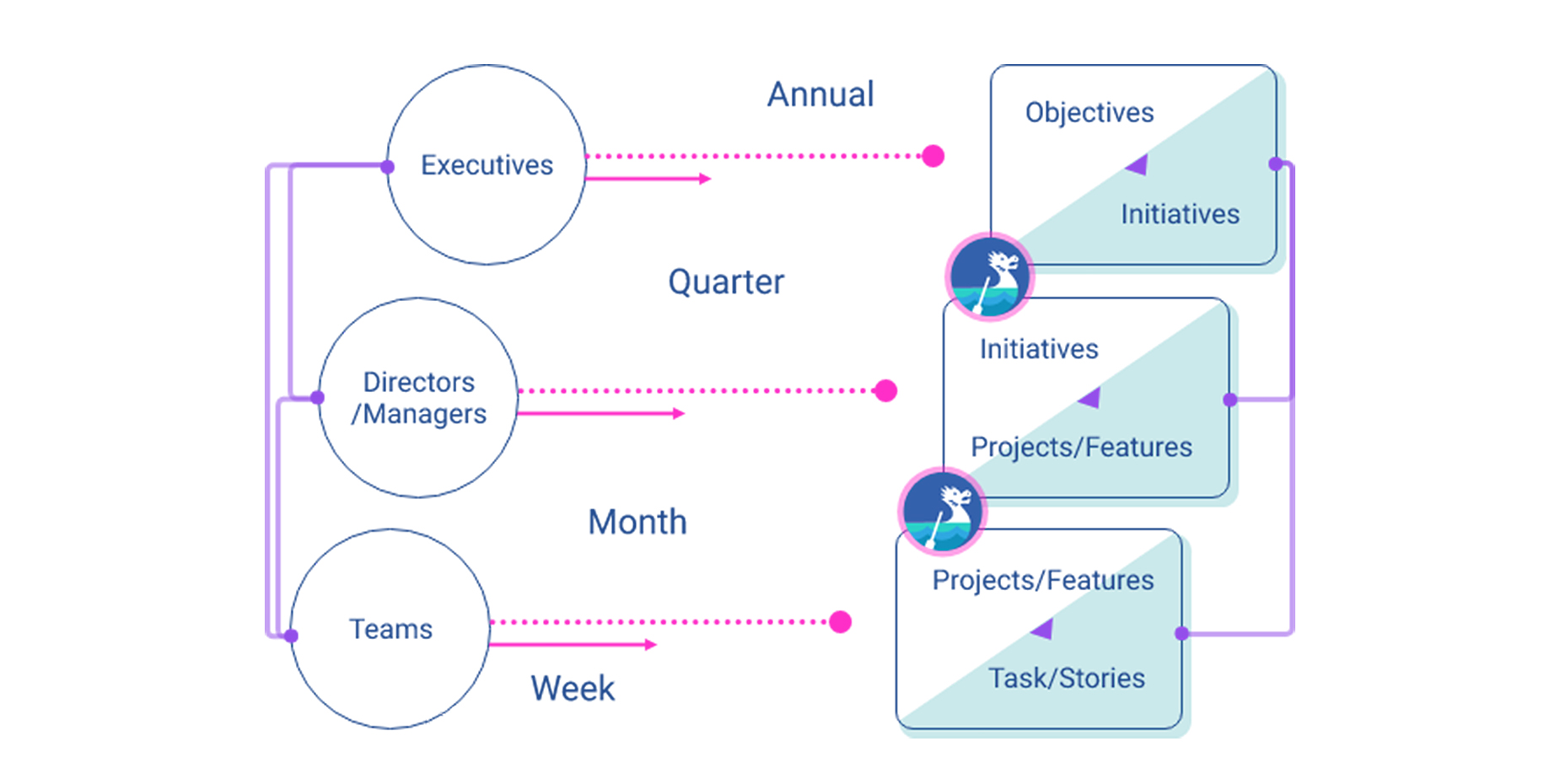Annual Planning: A Key Practice for Product and Portfolio Success
Annual planning is a critical business practice that sets the stage for a company’s strategy over the course of the year. It involves aligning teams around shared long-term and short-term goals, while also ensuring that resources and priorities are allocated effectively to meet those objectives. For Chief Product Officers (CPOs), Product Operations Leaders, and Portfolio Management Executives, annual planning serves as the foundation for decision-making, roadmap creation, and cross-functional alignment throughout the year.
At its core, annual planning is the process through which an organization defines its key objectives and goals, establishes the metrics for success, and outlines the strategic actions needed to achieve those targets. It’s a time when senior leadership gathers to discuss and solidify the company’s vision, taking into account both internal capabilities and market realities. For product and portfolio leaders, the results of this planning process are not just a set of broad corporate goals—they are actionable insights that inform how product teams align their efforts with overarching business priorities.
Read our Step-By-Step Guide to Annual Strategic Planning.
The Purpose and Value of Annual Planning for Product Teams
Annual planning is important because it ensures that every team within the organization, including product and portfolio management teams, is working toward the same direction. For a Chief Product Officer (CPO), it provides the opportunity to align product strategy with the company’s overall business strategy. This alignment is essential in helping teams prioritize initiatives that deliver the highest value, ensuring resources are used effectively, and setting realistic timelines for product development.
For product operations leaders, it is the perfect opportunity to establish frameworks for operational efficiency. It’s about optimizing processes and ensuring that product development workflows, tools, and systems are fine-tuned to meet the planned objectives. Clear strategic direction helps these leaders ensure that the right product management methodologies (such as Agile or Lean) are implemented and that there is effective collaboration between teams across the product lifecycle.
Portfolio management executives benefit from annual planning by gaining a clear understanding of the company’s strategic goals and how they map onto the product portfolio. With a well-planned and prioritized product portfolio, executives can better manage resources, assess risks, and ensure that every product initiative is moving in line with business objectives. It also provides a basis for adjusting priorities throughout the year as market dynamics shift.
How Annual Planning Impacts Product Portfolios
The output of annual planning directly influences product roadmaps and the allocation of resources to different initiatives within a product portfolio. For CPOs, this process often involves refining product visions, defining key performance indicators (KPIs), and setting specific milestones for the year. This clarity allows product teams to break down broad company goals into actionable and measurable outcomes.
Additionally, during the annual planning cycle, product leaders often assess which products within their portfolio are underperforming or may need additional investment. Similarly, new product ideas or potential acquisitions are evaluated for their ability to help the company meet its strategic goals. As a result, portfolio management executives can ensure that the most promising product ideas receive the attention they deserve while minimizing resources spent on projects that may no longer align with the broader company vision.
A Dynamic and Ongoing Process
Although annual planning is a structured, once-a-year event, it is important to recognize that the planning process is ongoing and dynamic. The strategy set in the annual planning session is subject to adaptation as market conditions, customer feedback, and internal performance evolve. Product and portfolio leaders must stay flexible and responsive throughout the year to adjust their strategies and priorities when necessary.
For CPOs and product operations leaders, maintaining this agility is key. Even after the annual planning cycle concludes, it’s crucial to hold regular check-ins and performance reviews to assess whether product initiatives are on track and delivering the expected value. These checkpoints allow product leaders to refine their strategies and adapt to unforeseen challenges.
Discover How to Lead Strategic Planning to Achieve More with Less.
Conclusion
In summary, annual planning is more than just a once-a-year event; it’s a foundational practice that guides product and portfolio management throughout the year. For CPOs, product operations leaders, and portfolio management executives, this practice ensures alignment between corporate strategy and product execution. It allows teams to define clear priorities, allocate resources effectively, and stay agile enough to pivot when needed. Done right, annual planning sets the stage for successful product outcomes and long-term business growth.
